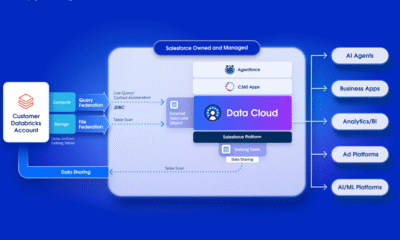Lees, C. C. et al. ISUOG Practice Guidelines: diagnosis and management of small-for-gestational-age fetus and fetal growth restriction. Ultrasound Obstet. Gynecol. 56, 298–312 (2020).
CAS
PubMed
Google Scholar
Martin. Health—United Nations Sustainable Development. United Nations Sustainable Development https://www.un.org/sustainabledevelopment/health/#tab-3f22056b0e91266e8b2 (2023).
Krasevec, J. et al. Study protocol for UNICEF and WHO estimates of global, regional, and national low birthweight prevalence for 2000 to 2020. Gates Open Res. 6, 80 (2022).
PubMed
PubMed Central
Google Scholar
Blencowe, H. et al. National, regional, and worldwide estimates of low birthweight in 2015, with trends from 2000: a systematic analysis. Lancet Glob. Health 7, e849–e860 (2019).
PubMed
PubMed Central
Google Scholar
Jia, C. H. et al. Short term outcomes of extremely low birth weight infants from a multicenter cohort study in Guangdong of China. Sci. Rep. 12, 11119 (2022).
ADS
CAS
PubMed
PubMed Central
Google Scholar
Low birth weight. https://www.who.int/data/nutrition/nlis/info/low-birth-weight.
Okwaraji, Y. B. et al. National, regional, and global estimates of low birthweight in 2020, with trends from 2000: a systematic analysis. Lancet 403, 1071–1080 (2024).
PubMed
Google Scholar
International Institute for Population Sciences (IIPS) and Macro International. 2007. National Family Health Survey (NFHS-3), 2005–06: India: Volume I. Mumbai: IIPS.
Singh, D. et al. Prevalence and correlates of low birth weight in India: findings from National Family Health Survey 5. BMC Pregnancy Childbirth 23, 1–10 (2023).
Google Scholar
Sabbaghchi, M., Jalali, R. & Mohammadi, M. A systematic review and meta-analysis on the prevalence of low birth weight infants in Iran. J. Pregnancy 2020, 1–7 (2020).
Google Scholar
Institute of Medicine (US) Committee on Improving Birth Outcomes. In Improving Birth Outcomes: Meeting the Challenge in the Developing World (eds. Bale, J. R., Stoll, B. J., Lucas, A. O.) (National Academies Press, 2003). https://www.ncbi.nlm.nih.gov/books/NBK222095/.
Derakhshi, B., Esmailnasab, N., Ghaderi, E. & Hemmatpour, S. Risk factor of preterm labor in the west of Iran: a case-control study. DOAJ 43, 499–506 (2014).
Google Scholar
Moradi, G., Zokaeii, M., Goodarzi, E. & Khazaei, Z. Maternal risk factors for low birth weight infants: a nested case-control study of rural areas in Kurdistan (western of Iran). J. Prev. Med. Hyg. (2021).
Katz, J. et al. Mortality risk in preterm and small-for-gestational-age infants in low-income and middle-income countries: a pooled country analysis. Lancet 382, 417–425 (2013).
PubMed
PubMed Central
Google Scholar
Knop, M. R. et al. Birth weight and risk of Type 2 diabetes mellitus, cardiovascular disease, and hypertension in adults: a meta-analysis of 7,646,267 participants from 135 studies. J. Am. Heart Assoc. 7, e008870 (2018).
PubMed
PubMed Central
Google Scholar
Wu, M. et al. Estimation of fetal weight by ultrasonic examination. Int. J. Clin. Exp. Med. 8, 540–545 (2015).
PubMed
PubMed Central
Google Scholar
Dwivedi, Y. K. et al. Artificial intelligence (AI): multidisciplinary perspectives on emerging challenges, opportunities, and agenda for research, practice and policy. Int. J. Inf. Manag. 57, 101994 (2021).
Google Scholar
Alanazi, A. Using machine learning for healthcare challenges and opportunities. Inform. Med. Unlocked 30, 100924 (2022).
Google Scholar
Reddy, S. Explainability and artificial intelligence in medicine. Lancet Digit. Health 4, e214–e215 (2022).
CAS
PubMed
Google Scholar
Reza, T. B. & Salma, N. Prediction and feature selection of low birth weight using machine learning algorithms. J. Health Popul. Nutr. 43, 1–10 (2024).
Google Scholar
Ranjbar, A. et al. Machine learning-based approach for predicting low birth weight. BMC Pregnancy Childbirth 23, 1–9 (2023).
Google Scholar
de Morais, F. L. et al. Utilization of tree-based machine learning models for predicting low birth weight cases. BMC Pregnancy Childbirth 25, 207 (2025).
PubMed
PubMed Central
Google Scholar
Naimi, A. I., Platt, R. W. & Larkin, J. C. Machine learning for fetal growth prediction. Epidemiology 29, 290 (2018).
PubMed
PubMed Central
Google Scholar
Tao, J., Yuan, Z., Sun, L., Yu, K. & Zhang, Z. Fetal birthweight prediction with measured data by a temporal machine learning method. BMC Med. Inform. Decis. Mak. 21, 1–10 (2021).
Google Scholar
Rubaiya, N., Mansur, M., Alam, M. M. & Rayhan, M. I. Unraveling birth weight determinants: integrating machine learning, spatial analysis, and district-level mapping. Heliyon 10, e27341 (2024).
CAS
PubMed
PubMed Central
Google Scholar
Sadeghi, Z. et al. A review of explainable artificial intelligence in healthcare. Comput. Electr. Eng. 118, 109370 (2024).
Google Scholar
Gill, S. V., May-Benson, T. A., Teasdale, A. & Munsell, E. G. Birth and developmental correlates of birth weight in a sample of children with potential sensory processing disorder. BMC Pediatr. 13, 1–9 (2013).
Google Scholar
Tarín, J. J., García-Pérez, M. A. & Cano, A. Potential risks to offspring of intrauterine exposure to maternal age-related obstetric complications. Reprod. Fertil. Dev. 29, 1468–1475 (2016).
Google Scholar
Wang, S. et al. Changing trends of birth weight with maternal age: a cross-sectional study in Xi’an city of Northwestern China. BMC Pregnancy Childbirth 20, 1–7 (2020).
Google Scholar
Softa, S. M. et al. The association of maternal height with mode of delivery and fetal birth weight at King Abdulaziz University Hosc, Jeddah,. Saudi Arabia. Cureus 14, e27493 (2022).
PubMed
Google Scholar
Rochow, N. et al. Maternal body height is a stronger predictor of birth weight than ethnicity: analysis of birth weight percentile charts. J. Perinat. Med. 47, 22–29 (2018).
PubMed
Google Scholar
Spada, E., Chiossi, G., Coscia, A., Monari, F. & Facchinetti, F. Effect of maternal age, height, BMI and ethnicity on birth weight: an Italian multicenter study. J. Perinat. Med. 46, 1016–1021 (2017).
Google Scholar
Ludwig, D. S. & Currie, J. The association between pregnancy weight gain and birthweight: a within-family comparison. Lancet 376, 984–990 (2010).
PubMed
PubMed Central
Google Scholar
Hussey, M. R. et al. Associations of placental lncRNA expression with maternal pre-pregnancy BMI and infant birthweight in two birth cohorts. J. Dev. Orig. Health Dis. 16, 1–10 (2025).
Google Scholar
Garces, A. et al. Association of parity with birthweight and neonatal death in five sites: The Global Network’s Maternal Newborn Health Registry study. Reprod. Health 17, 1–8 (2020).
MathSciNet
Google Scholar
Shah, P. S. Parity and low birth weight and preterm birth: a systematic review and meta-analyses. Acta Obstet. Gynecol. Scand. 89, 862–875 (2010).
PubMed
Google Scholar
Wang, Y. A. et al. Preterm birth and low birth weight after assisted reproductive technology-related pregnancy in Australia between 1996 and 2000. Fertil. Steril. 83, 1650–1658 (2005).
PubMed
Google Scholar
Zhong, X. et al. Effect of parental physiological conditions and assisted reproductive technologies on the pregnancy and birth outcomes in infertile patients. Oncotarget 8, 18409–18416 (2016).
PubMed Central
Google Scholar
Rahmati, S., Azami, M., Badfar, G., Parizad, N. & Sayehmiri, K. The relationship between maternal anemia during pregnancy with preterm birth: a systematic review and meta-analysis. J. Matern. Fetal Neonatal Med. 33, 2679–2689 (2018).
Google Scholar
Sherwani, S. I., Khan, H. A., Ekhzaimy, A., Masood, A. & Sakharkar, M. K. Significance of HbA1C test in diagnosis and prognosis of diabetic patients. Biomark. Insights 11, BMI.S38440 (2016).
Google Scholar
Gabbe, S. Management of diabetes mellitus complicating pregnancy. Obstet. Gynecol. 102, 857–868 (2003).
PubMed
Google Scholar
Li, J. et al. Maternal TSH levels at first trimester and subsequent spontaneous miscarriage: a nested case–control study. Endocr. Connect. 8, 1288–1293 (2019).
CAS
PubMed
PubMed Central
Google Scholar
Nishioka, E. et al. Relationship between maternal thyroid-stimulating hormone (TSH) elevation during pregnancy and low birth weight: A longitudinal study of apparently healthy urban Japanese women at very low risk. Early Hum. Dev. 91, 181–185 (2015).
CAS
PubMed
Google Scholar
Bilardo, C. M. et al. ISUOG Practice Guidelines (updated): performance of 11–14-week ultrasound scan. Ultrasound Obstet. Gynecol. 61, 127–143 (2023).
CAS
PubMed
Google Scholar
Kalousová, M., Muravská, A. & Zima, T. Pregnancy-associated plasma protein A (PAPP-A) and preeclampsia. Adv. Clin. Chem. 63, 169–209 (2014).
PubMed
Google Scholar
Shiefa, S., Amargandhi, M., Bhupendra, J., Moulali, S. & Kristine, T. First trimester maternal serum screening using biochemical markers PAPP-A and free Β-HCG for Down syndrome, Patau syndrome and Edward syndrome. Indian J. Clin. Biochem. 28, 3–12 (2012).
PubMed
PubMed Central
Google Scholar
Salomon, L. J. et al. ISUOG Practice Guidelines (updated): performance of the routine mid-trimester fetal ultrasound scan. Ultrasound Obstet. Gynecol. 59, 840–856 (2022).
CAS
PubMed
Google Scholar
Ogonowski, J. & Miazgowski, T. Intergenerational transmission of macrosomia in women with gestational diabetes and normal glucose tolerance. Eur. J. Obstet. Gynecol. Reprod. Biol. 195, 113–116 (2015).
CAS
PubMed
Google Scholar
Yang, Y. et al. The association of gestational diabetes mellitus with fetal birth weight. J. Diabetes Complications 32, 635–642 (2018).
PubMed
Google Scholar
Ardissino, M. et al. Maternal hypertension increases risk of preeclampsia and low fetal birthweight: Genetic evidence from a Mendelian randomization study. Hypertension 79, 588–598 (2022).
CAS
PubMed
Google Scholar
Cutland, C. L. et al. Low birth weight: case definition & guidelines for data collection, analysis, and presentation of maternal immunization safety data. Vaccine 35, 6492–6500 (2017).
PubMed
PubMed Central
Google Scholar
Aziz, F., Khan, M. F. & Moiz, A. Gestational diabetes mellitus, hypertension, and dyslipidemia as the risk factors of preeclampsia. Sci. Rep. 14, 1–11 (2024).
Google Scholar
Celik, N. Welch’s ANOVA: Heteroskedastic skew-t error terms. Commun. Stat. Theory Methods 51, 3065–3076 (2022).
MathSciNet
Google Scholar
Mujahid, M. et al. Data oversampling and imbalanced datasets: an investigation of performance for machine learning and feature engineering. J Big Data 11, 87 (2024).
Google Scholar
Cerda, P., Varoquaux, G. & Kégl, B. Similarity encoding for learning with dirty categorical variables. Mach. Learn. 107, 1477–1494 (2018).
MathSciNet
Google Scholar
Alkhawaldeh, I. M., Albalkhi, I. & Naswhan, A. J. Challenges and limitations of synthetic minority oversampling techniques in machine learning. World J. Methodol. 13, 373–378 (2023).
PubMed
PubMed Central
Google Scholar
Abedin, M. Z., Guotai, C., Hajek, P. & Zhang, T. Combining weighted SMOTE with ensemble learning for the class-imbalanced prediction of small business credit risk. Complex Intell. Syst. 9, 3559–3579 (2022).
Google Scholar
Kraskov, A., Stögbauer, H. & Grassberger, P. Estimating mutual information. Phys. Rev. E 69, 066138 (2004).
ADS
MathSciNet
Google Scholar
Shipe, M. E., Deppen, S. A., Farjah, F. & Grogan, E. L. Developing prediction models for clinical use using logistic regression: an overview. J. Thorac. Dis. 11, S574–S584 (2019).
PubMed
PubMed Central
Google Scholar
Montomoli, J. et al. Machine learning using the extreme gradient boosting (XGBoost) algorithm predicts 5-day delta of SOFA score at ICU admission in COVID-19 patients. J. Intensive Med. 1, 110–116 (2021).
PubMed
PubMed Central
Google Scholar
Jabbar, M. A., Deekshatulu, B. L. & Chandra, P. Classification of heart disease using K-nearest neighbor and genetic algorithm. arXiv preprint arXiv:1508.02061 (2015).
Zheng, J. et al. Clinical data based XGBoost algorithm for infection risk prediction of patients with decompensated cirrhosis: a 10-year (2012–2021) multicenter retrospective case-control study. BMC Gastroenterol. 23, 1–13 (2023).
ADS
PubMed
PubMed Central
Google Scholar
Loef, B. et al. Using random forest to identify longitudinal predictors of health in a 30-year cohort study. Sci. Rep. 12, 1–12 (2022).
Google Scholar
Wallace, M. L. et al. Use and misuse of random forest variable importance metrics in medicine: demonstrations through incident stroke prediction. BMC Med. Res. Methodol. 23, 1–12 (2023).
Google Scholar
Singh, D. & Singh, B. Investigating the impact of data normalization on classification performance. Appl. Soft Comput. 97, 105524 (2019).
Google Scholar
Kaliappan, J. et al. Impact of cross-validation on machine learning models for early detection of intrauterine fetal demise. Diagnostics (Basel) 13, 1692 (2023).
Elgeldawi, E., Sayed, A., Galal, A. R. & Zaki, A. M. Hyperparameter tuning for machine learning algorithms used for Arabic sentiment analysis. Informatics 8, 79 (2021).
Google Scholar
Shekar, B. H. & Dagnew, G. Grid search-based hyperparameter tuning and classification of microarray cancer data. In Proc. Int. Conf. Adv. Comput. Commun. Paradigms (ICACCP) (2019). https://doi.org/10.1109/ICACCP.2019.8882943
Chadaga, K. et al. Explainable artificial intelligence approaches for COVID-19 prognosis prediction using clinical markers. Sci. Rep. 14, 1–14 (2024).
Google Scholar
Tougui, I., Jilbab, A. & Mhamdi, J. E. Impact of the choice of cross-validation techniques on the results of machine learning-based diagnostic applications. Healthc. Inform. Res. 27, 189–199 (2021).
PubMed
PubMed Central
Google Scholar
Rodríguez-Pérez, R. & Bajorath, J. Interpretation of machine learning models using shapley values: application to compound potency and multi-target activity predictions. J. Comput. Aided Mol. Des. 34, 1013–1026 (2020).
ADS
PubMed
PubMed Central
Google Scholar
Lundberg, S. M. et al. From local explanations to global understanding with explainable AI for trees. Nat. Mach. Intell. 2, 56–67 (2020).
PubMed
PubMed Central
Google Scholar
Abdullakutty, F. et al. Histopathology in focus: a review on explainable multi-modal approaches for breast cancer diagnosis. Front. Med. 11, 1450103 (2024).
Google Scholar
Javaid, M., Haleem, A., Pratap Singh, R., Suman, R. & Rab, S. Significance of machine learning in healthcare: Features, pillars and applications. Int. J. Intell. Netw. 3, 58–73 (2022).
Google Scholar
Arain, Z., Iliodromiti, S., Slabaugh, G., David, A. L. & Chowdhury, T. T. Machine learning and disease prediction in obstetrics. Curr. Res. Physiol. 6, 100099 (2023).
CAS
PubMed
PubMed Central
Google Scholar
Alzubaidi, M. et al. Ensemble transfer learning for fetal head analysis: From segmentation to gestational age and weight prediction. Diagnostics 12, 2229 (2022).
PubMed
PubMed Central
Google Scholar
Hughes, M. M., Black, R. E. & Katz, J. 2500-g low birth weight cutoff: history and implications for future research and policy. Matern. Child Health J. 21, 283 (2016).
PubMed Central
Google Scholar
Zeegers, B. et al. Birthweight charts customised for maternal height optimises the classification of small and large-for-gestational age newborns. Acta Paediatr. https://doi.org/10.1111/APA.17332 (2024).
PubMed
Google Scholar
Teoh, Z.H., Mariapun, J., Ko, V.S.Y., Dominic, N.A., Jeganathan, R., Karalasingam, S.D. & Thirunavuk Arasoo, V.J. Maternal height, and ethnicity and birth weight: A retrospective cohort study of uncomplicated term vaginal deliveries in Malaysia. Birth. 51, 620–628 (2024).
Sutan, R., Mohtar, M., Mahat, A. N. & Tamil, A. M. Determinant of low birth weight infants: a matched case control study. Open J. Prev. Med. 4, 91–99 (2014).
Google Scholar
To, W. W. K., Cheung, W. & Kwok, J. S. Y. Paternal height and weight as determinants of birth weight in a Chinese population. Am. J. Perinatol. 15, 545–548 (1998).
CAS
PubMed
Google Scholar
Pölzlberger, E., Hartmann, B., Hafner, E., Stümpflein, I. & Kirchengast, S. Maternal height and pre-pregnancy weight status are associated with fetal growth patterns and newborn size. J. Biosoc. Sci. 49, 392–407 (2017).
PubMed
Google Scholar
Ay, L. et al. Maternal anthropometrics are associated with fetal size in different periods of pregnancy and at birth: the Generation R Study. BJOG 116, 953–963 (2009).
CAS
PubMed
Google Scholar
Mathai, M. et al. Ethnicity and fetal growth in Fiji. Aust. N. Z. J. Obstet. Gynaecol. 44, 318–321 (2004).
PubMed
Google Scholar
Figueras, F. et al. Customized birthweight standards for a Spanish population. Eur. J. Obstet. Gynecol. Reprod. Biol. 136, 20–24 (2008).
CAS
PubMed
Google Scholar
Britto, R. P. D. A. et al. Influence of maternal height and weight on low birth weight: a cross-sectional study in poor communities of northeastern Brazil. PLoS ONE 8, e000000 (2013).
Google Scholar
Mongelli, M., Figueras, F., Francis, A. & Gardosi, J. A customised birthweight centile calculator developed for an Australian population. Aust. N. Z. J. Obstet. Gynaecol. 47, 128–131 (2007).
PubMed
Google Scholar
McCowan, L., Stewart, A. W., Francis, A. & Gardosi, J. A customised birthweight centile calculator developed for a New Zealand population. Aust. N. Z. J. Obstet. Gynaecol. 44, 428–431 (2004).
PubMed
Google Scholar
Zhang, G. et al. Assessing the causal relationship of maternal height on birth size and gestational age at birth: a Mendelian randomization analysis. PLoS Med. 12, e100000 (2015).
Google Scholar
Kaur, S. et al. Risk factors for low birth weight among rural and urban Malaysian women. BMC Public Health 19, 539 (2019).
PubMed
PubMed Central
Google Scholar
Inoue, S. et al. Association between short maternal height and low birth weight: a hospital-based study in Japan. J. Korean Med. Sci. 31, 353–359 (2016).
CAS
PubMed
PubMed Central
Google Scholar
Retnakaran, R. et al. Association of timing of weight gain in pregnancy with infant birth weight. JAMA Pediatr. 172, 136–142 (2018).
PubMed
Google Scholar
Mohapatra, I., Harshini, N., Samantaray, S. R. & Naik, G. Association between early pregnancy body mass index and gestational weight gain in relation to neonatal birth weight. Cureus 14, e23000 (2022).
Google Scholar
Arora, P. & Tamber Aeri, B. Gestational weight gain among healthy pregnant women from Asia in comparison with Institute of Medicine (IOM) Guidelines-2009: a systematic review. J. Pregnancy 2019, 3849596 (2019).
PubMed
PubMed Central
Google Scholar
Hackmon, R. et al. Do early fetal measurements and nuchal translucency correlate with term birth weight?. J. Obstet. Gynaecol. Can. 39, 750–756 (2017).
PubMed
Google Scholar
Jackson, M. & Rose, N. C. Diagnosis and management of fetal nuchal translucency. Semin. Roentgenol. 33, 333–338 (1998).
CAS
PubMed
Google Scholar
Kalem, Z., Kaya, A. E., Bakırarar, B. & Kalem, M. N. Fetal nuchal translucency: is there an association with birthweight and neonatal wellbeing?. Turk. J. Obstet. Gynecol. 16, 35–40 (2019).
PubMed
PubMed Central
Google Scholar
Napolitano, R. et al. Pregnancy dating by fetal crown–rump length: a systematic review of charts. BJOG 121, 556–565 (2014).
CAS
PubMed
Google Scholar
Fries, N. et al. The impact of optimal dating on the assessment of fetal growth. BMC Pregnancy Childbirth 21, 1–8 (2021).
Google Scholar
Salomon, L. J. Early fetal growth: concepts and pitfalls. Ultrasound Obstet. Gynecol. 35, 385–389 (2010).
CAS
PubMed
Google Scholar
Papageorghiou, A. T. et al. International standards for early fetal size and pregnancy dating based on ultrasound measurement of crown–rump length in the first trimester of pregnancy. Ultrasound Obstet. Gynecol. 44, 641 (2014).
CAS
PubMed
PubMed Central
Google Scholar
Kozuki, N. et al. The associations of parity and maternal age with small-for-gestational-age, preterm, and neonatal and infant mortality: A meta-analysis. BMC Public Health 13(Suppl 3), S2 (2013).
PubMed
PubMed Central
Google Scholar
Hinkle, S. N. et al. The association between parity and birthweight in a longitudinal consecutive pregnancy cohort. Paediatr. Perinat. Epidemiol. 28, 106 (2013).
PubMed
PubMed Central
Google Scholar
Krulewitch, C. J., Herman, A. A., Yu, K. F. & Johnson, Y. R. Does changing paternity contribute to the risk of intrauterine growth retardation?. Paediatr. Perinat. Epidemiol. 11, 41–47 (1997).
PubMed
Google Scholar
Luo, Z. C. et al. The effects and mechanisms of primiparity on the risk of pre-eclampsia: a systematic review. Paediatr. Perinat. Epidemiol. 21, 36–45 (2007).
PubMed
Google Scholar
Sørnes, T. & Bakke, T. Uterine size, parity and umbilical cord length. Acta Obstet. Gynecol. Scand. 68, 439–441 (1989).
PubMed
Google Scholar
Clapp, J. F. & Capeless, E. Cardiovascular function before, during, and after the first and subsequent pregnancies. Am. J. Cardiol. 80, 1469–1473 (1997).
PubMed
Google Scholar
Dasa, T. T., Okunlola, M. A. & Dessie, Y. Effect of grand multiparity on the adverse birth outcome: a hospital-based prospective cohort study in Sidama Region, Ethiopia. Int. J. Womens Health 14, 363 (2022).
PubMed
PubMed Central
Google Scholar
Lin, L., Lu, C., Chen, W., Li, C. & Guo, V. Y. Parity and the risks of adverse birth outcomes: a retrospective study among Chinese. BMC Pregnancy Childbirth 21, 1–11 (2021).
CAS
Google Scholar
Baer, R. J., Lyell, D. J., Norton, M. E., Currier, R. J. & Jelliffe-Pawlowski, L. L. First trimester pregnancy-associated plasma protein-A and birth weight. Eur. J. Obstet. Gynecol. Reprod. Biol. 198, 1–6 (2016).
CAS
PubMed
Google Scholar
Turrado Sánchez, E. M., De Miguel Sánchez, V. & Macía Cortiñas, M. Correlation between PAPP-A levels determined during the first trimester and birth weight at full-term. Reprod. Sci. 30, 3235 (2023).
PubMed
Google Scholar
Zhao, D. et al. Association between maternal blood glucose levels during pregnancy and birth outcomes: a birth cohort study. Int. J. Environ. Res. Public Health 20, 2102 (2023).
CAS
PubMed
PubMed Central
Google Scholar
Everett, T. R. & Lees, C. C. Beyond the placental bed: placental and systemic determinants of the uterine artery Doppler waveform. Placenta 33, 893–901 (2012).
CAS
PubMed
Google Scholar
Liu, Y. et al. Impact of gestational hypertension and preeclampsia on low birthweight and small-for-gestational-age infants in China: a large prospective cohort study. J. Clin. Hypertens. 23, 835 (2021).
CAS
Google Scholar
Gibbs, C. M., Wendt, A., Peters, S. & Hogue, C. J. The impact of early age at first childbirth on maternal and infant health. Paediatr. Perinat. Epidemiol. 26, 259–284 (2012).
PubMed
PubMed Central
Google Scholar
Markovitz, B. P., Cook, R., Flick, L. H. & Leet, T. L. Socioeconomic factors and adolescent pregnancy outcomes: distinctions between neonatal and post-neonatal deaths?. BMC Public Health 5, 279 (2005).
Google Scholar
Sharma, V. et al. Young maternal age and the risk of neonatal mortality in rural Nepal. Arch. Pediatr. Adolesc. Med. 162, 828–835 (2008).
PubMed
PubMed Central
Google Scholar
Alam, N. Teenage motherhood and infant mortality in Bangladesh: maternal age-dependent effect of parity one. J. Biosoc. Sci. 32, 229–236 (2000).
CAS
PubMed
Google Scholar
Restrepo-Méndez, M. C. et al. Childbearing during adolescence and offspring mortality: findings from three population-based cohorts in southern Brazil. BMC Public Health 11, 781 (2011).
PubMed
PubMed Central
Google Scholar
Paranjothy, S., Broughton, H., Adappa, R. & Fone, D. Teenage pregnancy: who suffers?. Arch. Dis. Child. 94, 239–245 (2009).
CAS
PubMed
Google Scholar
Lawlor, D. A., Mortensen, L. & Andersen, A. M. N. Mechanisms underlying the associations of maternal age with adverse perinatal outcomes: a sibling study of 264,695 Danish women and their firstborn offspring. Int. J. Epidemiol. 40, 1205–1214 (2011).
PubMed
Google Scholar
Fall, C. H. D. et al. Association between maternal age at childbirth and child and adult outcomes in the offspring: a prospective study in five low-income and middle-income countries (COHORTS collaboration). Lancet Glob. Health 3, e366–e377 (2015).
PubMed
Google Scholar
Alves, C., Jenkins, S. M. & Rapp, A. Early pregnancy loss (spontaneous abortion) (StatPearls, 2023).
Jackson, T. & Watkins, E. Early pregnancy loss. J. Am. Acad. Physician Assist. 34, 22–27 (2021).
Google Scholar
Nicolaides, K. H. A model for a new pyramid of prenatal care based on the 11 to 13 weeks’ assessment. Prenat. Diagn. 31, 3–6 (2011).
PubMed
Google Scholar
Bekele, W. T. Machine learning algorithms for predicting low birth weight in Ethiopia. BMC Med. Inform. Decis. Mak. 22, 1–16 (2022).
Google Scholar
Arayeshgari, M., Najafi-Ghobadi, S., Tarhsaz, H., Parami, S. & Tapak, L. Machine learning-based classifiers for the prediction of low birth weight. Healthc. Inform. Res. 29, 54 (2023).
PubMed
PubMed Central
Google Scholar
Pollob, S. M. A. I., Abedin, M. M., Islam, M. T., Islam, M. M. & Maniruzzaman, M. Predicting risks of low birth weight in Bangladesh with machine learning. PLoS ONE 17, e000000 (2022).
Google Scholar
Khan, W. et al. Infant birth weight estimation and low birth weight classification in United Arab Emirates using machine learning algorithms. Sci. Rep. 12, 1–12 (2022).
ADS
Google Scholar
Hussain, Z. & Borah, M. D. Birth weight prediction of newborn baby with application of machine learning techniques on features of mother. J. Stat. Manag. Syst. 23, 1079–1091 (2020).
Google Scholar
Alabbad, D. A. et al. Birthweight range prediction and classification: a machine learning-based sustainable approach. Mach. Learn. Knowl. Extr. 6, 770–788 (2024).
Google Scholar
Dola, S. S. & Valderrama, C. E. Exploring parental factors influencing low birth weight on the 2022 CDC natality dataset. BMC Med. Inform. Decis. Mak. 24, 367 (2024).
PubMed
PubMed Central
Google Scholar
Liu, Q. et al. Machine learning approaches for predicting fetal macrosomia at different stages of pregnancy: a retrospective study in China. BMC Pregnancy Childbirth 25, 1–10 (2025).
Google Scholar







































